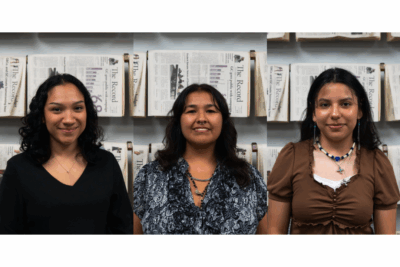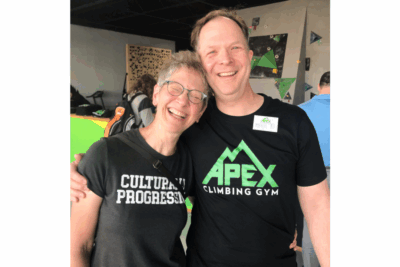The Local Indigenous Cultures and Perspectives SST course hosted its first cohort this year. This was due to several misfortunes with Goshen College partners in Arizona, which meant that SSTers were not able to immerse themselves in the culture of the Navajo and Hopi people.
With the number of changes that had been undertaken before the group was supposed to depart, Jerrell Richer, co-director of global engagement, and his colleague Kendra Yoder quickly changed direction and were able to find connections locally.“[The group] started the program by living at Camp Friedenswald across the state line in Michigan,” Richer said. “It’s a camp that is taking relationships with Indigenous people in the land very seriously.”
Richer and Yoder wanted students to get a closer look at the history of the land and cultures that may be overlooked. To do this, they highlighted local indigenous groups like the Potawatomi and Miami people that were living in Indiana and Michigan before they were forcibly removed in the early 1800s.
Wendy Hernandez, a senior nursing major, and Jill Yoder, a senior with an environmental and marine science major, are two of the eight students who were a part of the May SST group.
“While it wasn’t what we were expecting, it was still an incredibly valuable experience. I was able to gain more knowledge here than I would’ve in Arizona because these are the neighbors we have,” Hernandez said. “I enjoyed being able to learn about [the Potawatomi and Miami’s] history from their perspective and what they have had to live through. It made their experiences much more difficult to process because they were very straightforward with us.”
Like Hernandez, Jill Yoder left the SST with similar insight. “This experience really helped me to observe firsthand how our worldviews influence patterns of thinking. From an industrial colonial perspective, we tend to be more individualistic and see humans and nature as separate things. Indigenous worldviews tend to be more focused on relationships and how things are connected to one another,” she said.
Though the local Indigenous Perspectives SST was a success, there is still some work that must happen in order for it to become an official program in itself.
“The SST office, Kendra and Jerrell, have shown interest in doing this again. That’s not necessarily saying that we’ll never go back to Arizona, but that maybe, for now, Arizona is on a pseudo pause,” said Anna Groff, associate professor of communication, who was one of the co-leaders of the group.
While many of the activities, according to Richer, will mostly remain the same, the students and instructors mentioned that their stay at the campground for the Pokagon Band of Potawatomi was too short and they would have preferred to spend more time there.
“I think we would stay at Merry Lea [Environmental Learning Center] again because that bridges the geographical gap between campus and where the Miami people now live and work,” Richer said in regards to including more of the Miami peoples into the curriculum.
The purpose of the SST is to inform people about the way Indigenous communities impact the environment by using their knowledge of the land to slowly incorporate healing methods to better improve life.
“There are some Indigenous practices and customs that are really important to both the Potawatomi and the Miami. It’s really helpful to learn about it to realize that some of these different ways of living have been preserved and are evolving the future.” Richer said. “I think we have so much to learn from our Indigenous neighbors in that way.”




